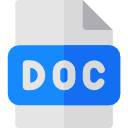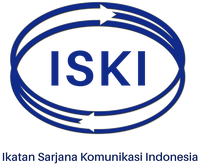Efek Twitter di Masa Pandemi COVID-19 pada Sikap dan Perilaku
DOI:
https://doi.org/10.31315/jik.v19i2.4178Keywords:
COVID-19, Intensitas Twitter, Kredibilitas Pesan, Sikap Kesehatan, Perilaku KesehatanAbstract
Peningkatan pengguna Twitter secara pesat selama masa pandemi COVID-19 menandai pentingnya media sosial tersebut dalam proses penyebaran informasi kesehatan. Di samping manfaatnya, tingkat akses Twitter yang tinggi dapat menyebabkan masyarakat kewalahan dengan informasi seputar COVID-19. Pesan dalam Twitter juga tidak luput dari disinformasi yang dapat menimbulkan keraguan hingga pengabaian khalayak terhadap pandemi. Hal ini sehubungan dengan Teori Cognitive Response dan Teori Elaboration Likelihood Model (ELM) yang menyatakan bahwa sikap dan perilaku individu dapat dipengaruhi oleh pesan yang diterima individu tersebut. Penelitian ini bertujuan untuk menguji hubungan antara intensitas penggunaan dan kredibilitas pesan dalam Twitter terhadap sikap dan perilaku kesehatan mahasiswa di masa pandemi COVID-19. Penelitian menggunakan metode kuantitatif dengan survei terhadap 120 mahasiswa Fakultas Ilmu Komunikasi Universitas Padjadjaran menggunakan teknik convenience sampling. Penelitian ini menemukan bahwa variabel intensitas penggunaan dan kredibilitas pesan tidak memiliki hubungan terhadap perubahan perilaku kesehatan, namun berhubungan dengan perubahan sikap kesehatan mahasiswa.
References
Aditya, N. R. (2021). Kemenkominfo: Sejak Pandemi Ada 1.387 Hoaks, 134 Diproses Polisi. https://nasional.kompas.com/read/2021/01/27/10394341/kemenkominfo-sejak-pandemi-ada-1387-hoaks-134-diproses-polisi?page=all
Ahmad, A. R., & Murad, H. R. (2020). The impact of social media on panic during the COVID-19 pandemic in Iraqi Kurdistan: online questionnaire study. Journal of Medical Internet Research, 22(5), e19556.
Ajzen, I. (2015). The theory of planned behaviour is alive and well, and not ready to retire: a commentary on Sniehotta, Presseau, and Araújo-Soares. Health Psychology Review, 9(2), 131–137.
Ajzen, I. (2020). The theory of planned behavior: Frequently asked questions. Human Behavior and Emerging Technologies, 2(4), 314–324.
Al-Dmour, H., Salman, A., Abuhashesh, M., & Al-Dmour, R. (2020). Influence of social media platforms on public health protection against the COVID-19 pandemic via the mediating effects of public health awareness and behavioral changes: integrated model. Journal of Medical Internet Research, 22(8), e19996.
Ali, S., Khalid, A., & Zahid, E. (2021). Is COVID-19 immune to misinformation? A brief overview. Asian Bioethics Review, 1–23.
Alibali, M. W., Brown, S. A., & Menendez, D. (2019). Understanding strategy change: Contextual, individual, and metacognitive factors. Advances in Child Development and Behavior, 56, 227–256.
Appelman, A., & Sundar, S. S. (2016). Measuring message credibility: Construction and validation of an exclusive scale. Journalism & Mass Communication Quarterly, 93(1), 59–79.
Bernasconi, F. (2020). Fontana: “Il coronavirus è poco più di una normale influenza” - ilGiornale. https://www.ilgiornale.it/news/politica/fontana-coronavirus-poco-pi-normale-influenza-1831891.html
Boer, M., Stevens, G. W. J. M., Finkenauer, C., de Looze, M. E., & van den Eijnden, R. J. J. M. (2021). Social media use intensity, social media use problems, and mental health among adolescents: Investigating directionality and mediating processes. Computers in Human Behavior, 116, 106645.
Bramasta, D. B. (2021). UPDATE Corona 1 September: Kasus Aktif Indonesia Turun di Bawah 200. https://www.kompas.com/tren/read/2021/09/01/074500965/update-corona-1-september--kasus-aktif-indonesia-turun-di-bawah-200.000
Bromme, R., & Goldman, S. R. (2014). The public’s bounded understanding of science. Educational Psychologist, 49(2), 59–69.
Brooks, I. (2020). Analysis of Social Media Data about COVID-19 in the Americas Twitter Volume 03 / 2020.
Chen, Y.-Y., Li, C.-M., Liang, J.-C., & Tsai, C.-C. (2018). Health information obtained from the internet and changes in medical decision making: questionnaire development and cross-sectional survey. Journal of Medical Internet Research, 20(2), e47.
Cook, J., Lewandowsky, S., & Ecker, U. K. H. (2017). Neutralizing misinformation through inoculation: Exposing misleading argumentation techniques reduces their influence. PloS One, 12(5), e0175799.
Depoux, A., Martin, S., Karafillakis, E., Preet, R., Wilder-Smith, A., & Larson, H. (2020). The pandemic of social media panic travels faster than the COVID-19 outbreak. Oxford University Press.
Dzulfaroh, A. N. (2020). Virus Corona Jadi Pandemi Global, Apa Dampak dan Langkah Selanjutnya? In Kompas.com. https://www.kompas.com/tren/read/2020/03/12/064800265/virus-corona-jadi-pandemi-global-apa-dampak-dan-langkah-selanjutnya-
Farida, I. A., Suminar, D. R., & Nawangsari, N. A. F. (2018). Adaptasi Bahasa Dan Budaya Need For Cognition Scale. Jurnal Sains Psikologi, 7(2), 148–154.
Flemming, D., Cress, U., & Kimmerle, J. (2017). Processing the scientific tentativeness of medical research: an experimental study on the effects of research news and user comments in online media. Science Communication, 39(6), 745–770.
Gao, J., Zheng, P., Jia, Y., Chen, H., Mao, Y., Chen, S., Wang, Y., Fu, H., & Dai, J. (2020). Mental health problems and social media exposure during COVID-19 outbreak. Plos One, 15(4), e0231924.
Gharavi, E., Nazemi, N., & Dadgostari, F. (2020). Early outbreak detection for proactive crisis management using twitter data: COVID-19 a case study in the us. ArXiv Preprint ArXiv:2005.00475.
Gottlieb, M., & Dyer, S. (2020). Information and Disinformation: Social Media in the COVID‐19 Crisis. Academic Emergency Medicine.
Gupta, L., Gasparyan, A. Y., Misra, D. P., Agarwal, V., Zimba, O., & Yessirkepov, M. (2020). Information and misinformation on COVID-19: a cross-sectional survey study. Journal of Korean Medical Science, 35(27).
Indonesia.go.id. (2020). Kasus COVID-19 Pertama, Masyarakat Jangan Panik. file:///Users/mairaphinata/Desktop/Dafpus Jurnal Metsur/Indonesia.go.id - Kasus COVID-19 Pertama, Masyarakat Jangan Panik.html
Kementerian Kesehatan Republik Indonesia. (2020). Vaksin COVID-19 Belum Ditemukan, Pemerintah Siapkan Skenario New Normal. https://www.kemkes.go.id/article/view/20052900001/vaksin-COVID-19-belum-ditemukan-pemerintah-siapkan-skenario-new-normal.html
Kementerian Komunikasi dan Informatika. (2020). Penggunaan Internet Naik 40% Saat Bekerja dan Belajar dari Rumah.
Komite Penanganan COVID – 19 dan Pemulihan Ekonomi Nasional. (2020). Ketahui: Adaptasi Kebiasaan Baru - Apa yang Harus Kamu Ketahui? | Satgas Penanganan COVID-19. https://COVID19.go.id/edukasi/apa-yang-harus-kamu-ketahui-tentang-COVID-19/adaptasi-kebiasaan-baru
Kor, P. P. K., Leung, A. Y. M., Parial, L. L., Wong, E. M. L., Dadaczynski, K., Okan, O., Amoah, P. A., Wang, S. S., Deng, R., & Cheung, T. C. C. (2021). Are People With Chronic Diseases Satisfied With the Online Health Information Related to COVID‐19 During the Pandemic? Journal of Nursing Scholarship, 53(1), 75–86.
Kouzy, R., Abi Jaoude, J., Kraitem, A., El Alam, M. B., Karam, B., Adib, E., Zarka, J., Traboulsi, C., Akl, E. W., & Baddour, K. (2020). Coronavirus goes viral: quantifying the COVID-19 misinformation epidemic on Twitter. Cureus, 12(3).
Lancet, T. (2020). COVID-19: fighting panic with information. Lancet (London, England), 395(10224), 537.
Maragakis, L. L. (2020). The New Normal and Coronavirus | Johns Hopkins Medicine. https://www.hopkinsmedicine.org/health/conditions-and-diseases/coronavirus/coronavirus-new-normal
McGowan, B. S., Wasko, M., Vartabedian, B. S., Miller, R. S., Freiherr, D. D., & Abdolrasulnia, M. (2012). Understanding the factors that influence the adoption and meaningful use of social media by physicians to share medical information. Journal of Medical Internet Research, 14(5), e117.
Nasrullah, R. (2015). Media sosial: Perspektif komunikasi, budaya, dan sosioteknologi. Bandung: Simbiosa Rekatama Media, 2016, 2017.
Nurrezki, S., & Irawan, R. (2020). Hubungan Stres, Cemas, dan Depresi dengan Kejadian Migrain Pada Mahasiswa Kedokteran di Jakarta. Damianus Journal of Medicine, 19(1), 1–7.
O’keefe, D. J. (2015). Persuasion: Theory and research. Sage Publications.
Pennycook, G., McPhetres, J., Zhang, Y., Lu, J. G., & Rand, D. G. (2020). Fighting COVID-19 misinformation on social media: Experimental evidence for a scalable accuracy-nudge intervention. Psychological Science, 31(7), 770–780.
Perloff, R. M. (2017). The dynamics of persuasion: Communication and attitudes in the 21st century. In The Dynamics of Persuasion: Communication and Attitudes in the Twenty-First Century. https://doi.org/10.4324/9781315657714
Perrault, E. K., Hildenbrand, G. M., McCullock, S. P., Schmitz, K. J., & Dolick, K. N. (2019). Hashtag health: College health on social media and students’ motivations to follow, interact, and share their social media content. Health Promotion Practice, 20(5), 721–729.
Petrocchi, N., Asnaani, A., Martinez, A. P., Nadkarni, A., & Hofmann, S. G. (2015). Differences between people who use only Facebook and those who use Facebook plus Twitter. International Journal of Human-Computer Interaction, 31(2), 157–165.
Petty, R. E., & Briñol, P. (2012). The elaboration likelihood model. In Handbook of theories of social psychology, Vol. 1 (pp. 224–245). Sage Publications Ltd. https://doi.org/10.4135/9781446249215.n12
Prybutok, G., & Ryan, S. (2015). Social media: the key to health information access for 18-to 30-year-old college students. CIN: Computers, Informatics, Nursing, 33(4), 132–141.
Rong, X., Yang, L., Chu, H., & Fan, M. (2020). Effect of delay in diagnosis on transmission of COVID-19. Math Biosci Eng, 17(3), 2725–2740.
Rosenberg, H., Syed, S., & Rezaie, S. (2020). The Twitter pandemic: The critical role of Twitter in the dissemination of medical information and misinformation during the COVID-19 pandemic. Canadian Journal of Emergency Medicine, 22(4), 418–421.
Rosini, R., & Nurningsih, S. (2018). Pemanfaatan media sosial untuk pencarian dan komunikasi informasi kesehatan. Berkala Ilmu Perpustakaan Dan Informasi, 14(2), 226–237.
Sciences, R. (2020). Twitter Functions in COVID-19 Pandemic and Other Natural Disasters: A Systematic Review Hamed Seddighi, Ibrahim Salmani. August. https://doi.org/10.20944/preprints202008.0235.v1
Seddighi, H., Seddighi, S., Salmani, I., & Sedeh, M. S. (2021). Public-private-people partnerships (4P) for improving the response to COVID-19 in Iran. Disaster Medicine and Public Health Preparedness, 15(1), e44–e49.
Shen, L. (2020). Cognitive Response Theory. The International Encyclopedia of Media Psychology, 1–5.
Shi, J., Poorisat, T., & Salmon, C. T. (2018). The use of social networking sites (SNSs) in health communication campaigns: review and recommendations. Health Communication, 33(1), 49–56.
St Louis, C., & Zorlu, G. (2012). Can Twitter predict disease outbreaks? Bmj, 344.
Stojanovic, I., Andreu, L., & Curras-Perez, R. (2018). Effects of the intensity of use of social media on brand equity: An empirical study in a tourist destination. European Journal of Management and Business Economics.
Stoycheff, E., Liu, J., Wibowo, K. A., & Nanni, D. P. (2017). What have we learned about social media by studying Facebook? A decade in review. New Media & Society, 19(6), 968–980.
Strekalova, Y. A. (2017). Health risk information engagement and amplification on social media: News about an emerging pandemic on Facebook. Health Education & Behavior, 44(2), 332–339.
Tagliabue, F., Galassi, L., & Mariani, P. (2020). The “pandemic” of disinformation in COVID-19. SN Comprehensive Clinical Medicine, 2(9), 1287–1289.
Van Lange, P. A. M., Kruglanski, A. W., & Higgins, E. T. (2011). Handbook of theories of social psychology: Volume two (Vol. 2). SAGE publications.
Venegas-Vera, A. V., Colbert, G. B., & Lerma, E. V. (2020). Positive and negative impact of social media in the COVID-19 era. Reviews in Cardiovascular Medicine, 21(4), 561–564.
VOI Indonesia. (2021). Selama Pandemi, Pengguna Twitter Tumbuh Pesat. https://voi.id/teknologi/48500/selama-pandemi-pengguna-twitter-tumbuh-pesat
Wang, Q., Chen, W., & Liang, Y. (2011). The effects of social media on college students. MBA Student Scholarship, 5(13), 1379–1548.
Washington Post. (2020). Twitter sees record number of users during pandemic, but advertising sales slow - The Washington Post. https://www.washingtonpost.com/business/economy/twitter-sees-record-number-of-users-during-pandemic-but-advertising-sales-slow/2020/04/30/747ef0fe-8ad8-11ea-9dfd-990f9dcc71fc_story.html
Wheaton, M. G., Prikhidko, A., & Messner, G. R. (2021). Is fear of COVID-19 contagious? The effects of emotion contagion and social media use on anxiety in response to the coronavirus pandemic. Frontiers in Psychology, 11, 3594.
WHO. (2020a). Coronavirus. https://www.who.int/health-topics/coronavirus#tab=tab_1
WHO. (2020b). Naming the coronavirus disease (COVID-19) and the virus that causes it. https://www.who.int/emergencies/diseases/novel-coronavirus-2019/technical-guidance/naming-the-coronavirus-disease-(COVID-2019)-and-the-virus-that-causes-it
Wirtz, B. W., Göttel, V., & Daiser, P. (2017). Social networks: usage intensity and effects on personalized advertising. Journal of Electronic Commerce Research, 18(2), 103–123.
Zhang, A. X., Ranganathan, A., Metz, S. E., Appling, S., Sehat, C. M., Gilmore, N., Adams, N. B., Vincent, E., Lee, J., & Robbins, M. (2018). A structured response to misinformation: Defining and annotating credibility indicators in news articles. Companion Proceedings of the The Web Conference 2018, 603–612.
Downloads
Published
Issue
Section
License
Authors who publish articles in this journal agree to the following terms:
- Copyright remains with the author and gives rights to the Jurnal Ilmu Komunikasi as the priority to publish the article with an Creative Commons Atribusi 4.0 Internasional License, which allows the article to be shared with acknowledgment of the author of the article and this journal as the place of publication.
- Authors can distribute the publication of their articles on a non-exclusive basis (for example: on university repositories or books) with notification or acknowledgment of publication in the journal Option
- Authors are allowed to post their work online (for example: on personal websites or in university repositories) before and after the submission process (see The Effect of Open Access)
Jurnal Ilmu Komunikasi is licensed under a Creative Commons Atribusi 4.0 Internasional License.










